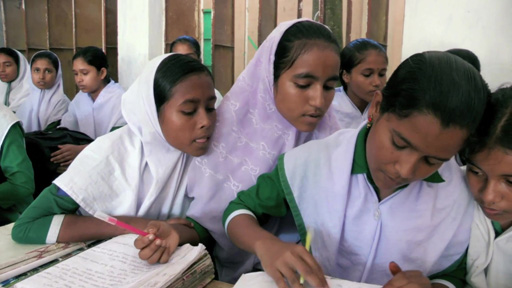2.1 The changing lives of girls
The statistician Hans Rosling has some interesting and controversial ideas about the changes to the world population that are happening now and about those projected, by some, for our future.
World fertility levels have dropped from an average of 5.0 in 1963 to an average of 2.5 in 2013. In most places around the world two children families are becoming the norm. In the following video Rosling follows Tanjina, a 15-year-old school girl in Bangladesh, whose family – the Khan’s – are responding to the changes related to population and gender. You will see how this can be highly advantageous to girls and women.

Transcript
[PLAYGROUND CHATTER]
Today, men and women are making reproductive choices not just on fiscal circumstances (their own and what the state is prepared to offer) but on changes to women’s lives (in terms of employment) and men’s lives (in terms of their involvement in parenting), and the availability of employment to both genders. As this video makes clear, many parents, as they have always done, project upon their children their hopes for their future and that of their country.
This section showed how the lives of girls have improved, however next you’ll consider the ways the lives of girls have not changed.
